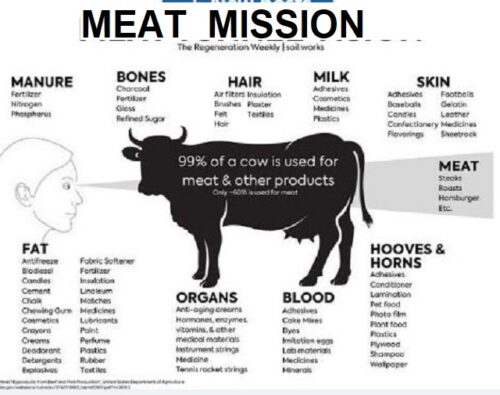3 January 2023
Meg Chatham, Associate at Soilworks Natural Capital | Author of The Regeneration asks: What do NFL footballs, insulin, surgical sutures, lipstick, refined sugar, and plywood have in common?

They all contain a beef by-product.
From nose to tail, 99% of a cow is used for either meat or other products; however, only about 60% is used for meat.
Considering the many products of cattle reminds me of the recent meme from Jan Konietzko cautioning climate advocates against the trap of “Carbon Tunnel Vision,” which occurs when we focus too much on one aspect of sustainability (carbon) and ignore a wide spectrum of equally important environmental and social impacts, like biodiversity loss, water crises, education, and gender equality.
Like discussions around carbon, cattle not only provide invaluable ecosystem services and nutrient-dense meat, but we also likely use at least one item containing inedible beef by-products every day.
Beef isn’t just something for our plates.
It’s for our boots and shoes for work; it’s for our baseballs and footballs for play; it’s for our paint and upholstery for our home; it’s for our tires and asphalt for our roads; it’s for our medicines and equipment for our pharmacies and hospitals.
This is often missed when folks argue to eliminate animals from our food system.
Without these, we would be even more dependent upon synthetic substitutes from fossil fuels.
Making regenerative agriculture the most obvious way to farm, requires a holistic approach to amplify awareness of all tangible and intangible products from better food production and natural capital stewardship.
When we discuss regenerative agriculture, we can’t only fixate on carbon. When we discuss regenerative beef, we can’t only consider meat. Our future depends on the broadening of our tunnel vision.

使用條款 | 隱私政策 | APLF 可持續發展